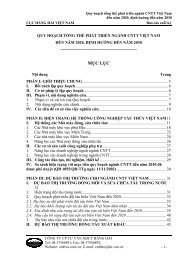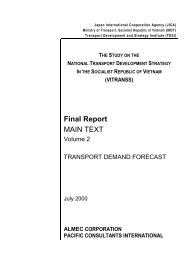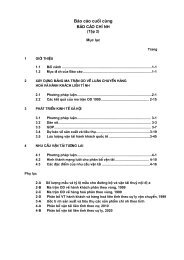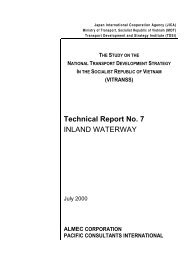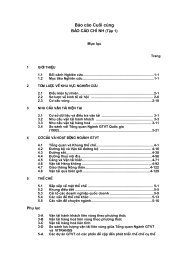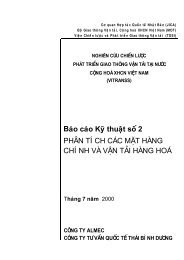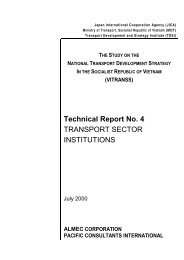Technical Report No. 8 PORT AND SHIPPING
Technical Report No. 8 PORT AND SHIPPING
Technical Report No. 8 PORT AND SHIPPING
You also want an ePaper? Increase the reach of your titles
YUMPU automatically turns print PDFs into web optimized ePapers that Google loves.
II-4-14<br />
Vietnam National Transport Strategy Study (VITRANSS)<br />
<strong>Technical</strong> <strong>Report</strong> <strong>No</strong>. 8<br />
Shipping and Ports<br />
sea route. If the volume of collected containers is enough to justify using a<br />
larger container vessel, a shipping line tends to avoid costly transshipment<br />
services. On the other hand, if the volume of containers is not enough to<br />
justify direct shipping between specific ports on a long sea route, a shipping<br />
line tends to choose transshipment services. In case of a short sea route,<br />
there is no significant difference between an economical main-line vessel and<br />
a feeder vessel. Hence, on a short sea route, a shipping line tends to choose<br />
multiple calling services using moderate-size main-line vessels to avoid costly<br />
transshipment, regardless of transport volume.<br />
Hong Kong, Jebel Ali, Colombo, Mediterranean ports, etc. are major<br />
transshipment ports on the Asian-European container route. An increasing<br />
trend in container cargo in Hong Kong is rather different from that of<br />
Singapore because of the developments of ports in Shenzhen City. Jebel Ali<br />
and Colombo ports are competing with Khor Fakkan and Fujaila for container<br />
cargoes to/from India-Pakistan feeder ports. In the Mediterranean Sea,<br />
Damietta, Malta, Gioia Tauro, and Algeciras are major transshipment ports,<br />
where transshipment ratios are higher than 50%. Generally, maritime<br />
transport business is fiercely competitive, hence shipping liners are used to<br />
changing port calls based on contract conditions. If a port has a disadvantage<br />
such as deviation from international container route, it provides compensation<br />
to port users for their additional time and energy. Therefore, the decision to<br />
invest in a transshipment port must be made carefully.<br />
Traffic characteristics<br />
Long Distance Short Distance<br />
Less Volume Large Volume<br />
Figure 4.4.1<br />
Transshipment Trend by Distance and Volume<br />
1.00<br />
0.90<br />
0.80<br />
0.70<br />
0.60<br />
0.50<br />
0.40<br />
0.30<br />
0.20<br />
0.10<br />
0.00<br />
Low (Direct) High<br />
Transshipment Level



